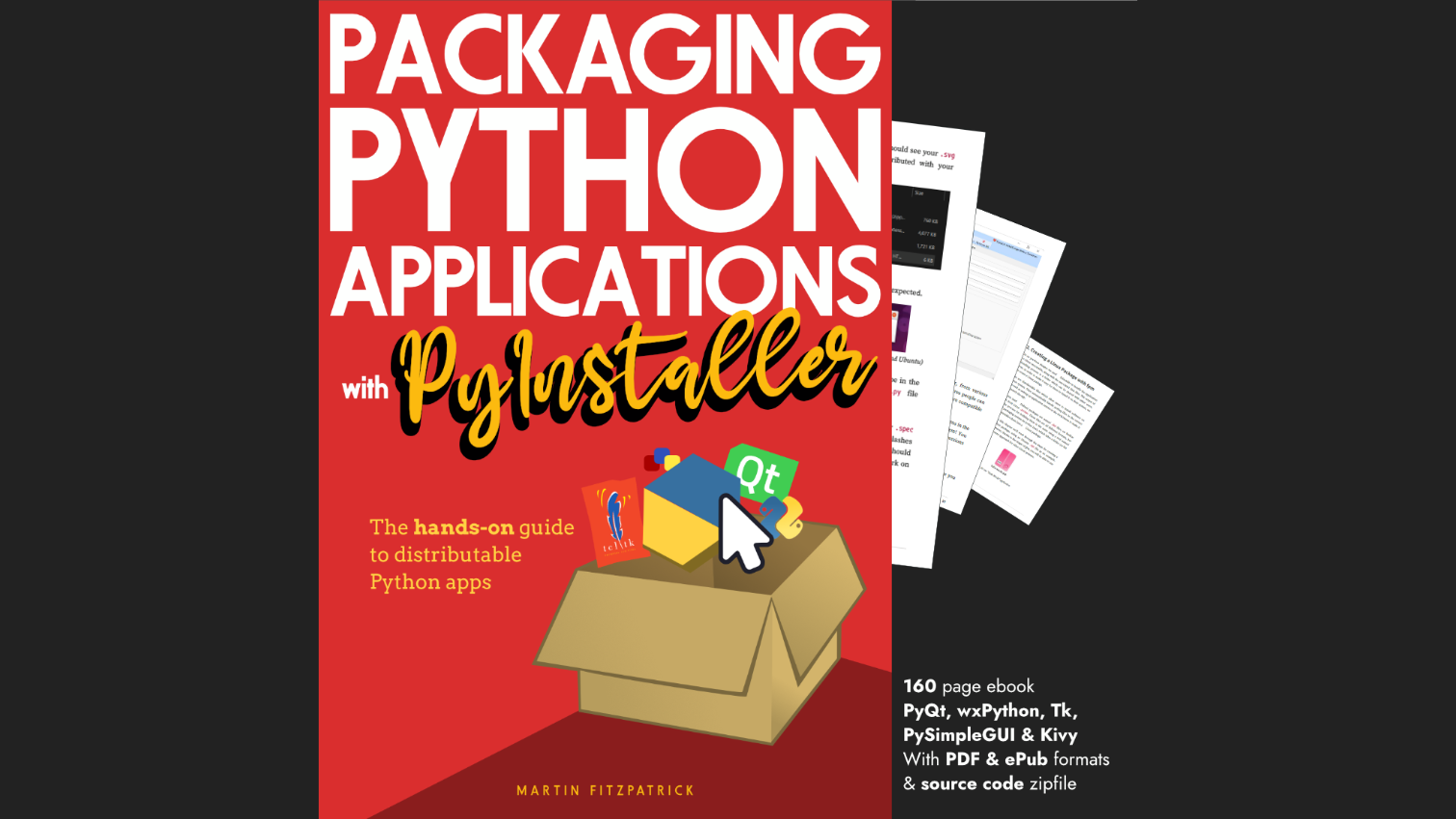Stefan_Boeykens | 2021-04-10 06:44:57 UTC | #1
I’ve discovered a few (rather minor) editing errors in the book. As I have the impression that it remains a book in constant update mode (the advantage of ebooks I guess), I wonder if you are open to share them to improve the book?
martin | 2021-04-10 07:19:49 UTC | #2
Hi @Stefan_Boeykens welcome to the forum. Corrections are very much appreciated -- the book is updated quite regularly, both for new editions (when I add chapters) or have accumulated enough edits to justify it (I just uploaded an update to all versions yesterday, while releasing the PyQt6 book).
You can post the corrections here, or send them through to me via email at martin@learnpyqt.com if that's easier. They might have been fixed in this last update, but feel free to send them anyway -- I'll know when I see them!
PedanticHacker | 2021-04-11 08:23:15 UTC | #3
@Stefan_Boeykens, you can also post HERE and issue your errata, if you like.
Create GUI Applications with Python & Qt6 by Martin Fitzpatrick — (PyQt6 Edition) The hands-on guide to making apps with Python — Over 15,000 copies sold!
Stefan_Boeykens | 2021-04-17 13:44:16 UTC | #4
I've used the "other" thread as suggested. Was a bit messy, as I read the epub version, which repaginates the whole book to be easier to read on an iPad.
Purchasing Power Parity
Developers in [[ country ]] get [[ discount.discount_pc ]]% OFF on all books & courses with code [[ discount.coupon_code ]]I loved the book and the many short code fragments. The problem with longer examples is that they become too hard to follow.
PyQt/PySide 1:1 Coaching with Martin Fitzpatrick — Save yourself time and frustration. Get one on one help with your Python GUI projects. Working together with you I'll identify issues and suggest fixes, from bugs and usability to architecture and maintainability.

